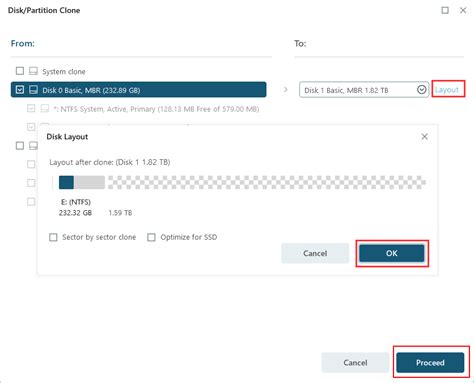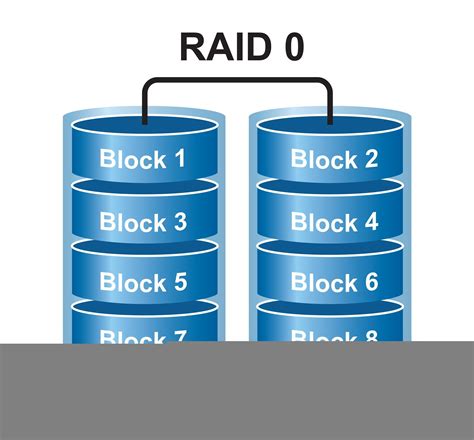clone single boot drive to raid 1 This guide shows how to convert a functional single-drive system to a RAID 1 setup after adding a second drive, without the need to temporarily store the data on a third drive. The procedure . $600 Per Week. Customer Service - Work From Home. 8 hr. ago
0 · raid clone software download
1 · raid backup software
2 · raid 1 cloning
3 · how to backup raid 0
4 · cloning raid drive windows 10
5 · cloning raid 1 drive
6 · boot hdd to raid 1
7 · aomei backkupper download
Yelp
Use a bootable disk imaging program (Acronic etc) while having the original disk hooked up - image from original disk to the new RAID 1 Array & then boot it up. No matter what you do, be sure you have a VERY solid backup.Connect drive to RAID controller and configure as RAID1, telling it to dupe to .First of all you don’t need to make it dynamic, if you are using IRST to create .This guide shows how to convert a functional single-drive system to a RAID 1 setup after adding a second drive, without the need to temporarily store the data on a third drive. The procedure .
If the goal for this system is zero downtime, then you want to use hardware RAID 1 to allow you to install and boot Windows from the RAID array. This will likely necessitate a . When you see a single drive that lists the size of your raid array you have successfully created a raid array. I was using a dual boot Ubuntu/Windows config, and . When I setup my pc a few years ago (8 or 9) I created a RAID 1 stack using 2x 120gb ssds where I installed the OS. Now, one of those two SSD is failing (according to some . Connect drive to RAID controller and configure as RAID1, telling it to dupe to blank drive. Make sure RAID controller is set as boot. Cross fingers, boot
Use a bootable disk imaging program (Acronic etc) while having the original disk hooked up - image from original disk to the new RAID 1 Array & then boot it up. No matter what you do, be sure you have a VERY solid backup.This guide shows how to convert a functional single-drive system to a RAID 1 setup after adding a second drive, without the need to temporarily store the data on a third drive. The procedure can also be adapted, simplifying it, to the conversion of simple non-root partitions, and to . If the goal for this system is zero downtime, then you want to use hardware RAID 1 to allow you to install and boot Windows from the RAID array. This will likely necessitate a complete.
When you see a single drive that lists the size of your raid array you have successfully created a raid array. I was using a dual boot Ubuntu/Windows config, and restored the image to the array. I didn't need to install any drivers at all and booted right back into Ubuntu. When I setup my pc a few years ago (8 or 9) I created a RAID 1 stack using 2x 120gb ssds where I installed the OS. Now, one of those two SSD is failing (according to some SMART report). I'd. Connect drive to RAID controller and configure as RAID1, telling it to dupe to blank drive. Make sure RAID controller is set as boot. Cross fingers, boot
First of all you don’t need to make it dynamic, if you are using IRST to create the RAID you will only see 64GB mirrored - do that first, then swap the smaller disk for large and let it rebuild (it will still boot), then using IRST expand the remaining space. If you are hoping to use RAID within windows - don’t bother. This partition magic software and help you clone RAID 0 to single drive, clone RAID 1 to larger drive, clone RAID 1 to SDD, and clone RAID 5. In addition, the process to clone RAID 0, 1, and 5 is the same. Here's a little background on the situation at hand. I have a DELL Precision T7600 at work that I'm responsible for maintaining, which just lost a hard-drive, thankfully just the /home directory was on it, and has now been recovered. Now I've been tasked with making a RAID 1 of the OS drive so that our downtime is to a minimum. I got out of this by issuing the following commands from my LiveUSB sfdisk -d /dev/sdc | sfdisk /dev/sda and ditto for sdb. Fedora loaded this time, but I was thrown into emergency mode, which is caused, at least in my case, as I've dealt with it before, by inexistant /etc/fstab entries. So I pruned the fstab to only mount the / partition.

raid clone software download
Use a bootable disk imaging program (Acronic etc) while having the original disk hooked up - image from original disk to the new RAID 1 Array & then boot it up. No matter what you do, be sure you have a VERY solid backup.This guide shows how to convert a functional single-drive system to a RAID 1 setup after adding a second drive, without the need to temporarily store the data on a third drive. The procedure can also be adapted, simplifying it, to the conversion of simple non-root partitions, and to . If the goal for this system is zero downtime, then you want to use hardware RAID 1 to allow you to install and boot Windows from the RAID array. This will likely necessitate a complete. When you see a single drive that lists the size of your raid array you have successfully created a raid array. I was using a dual boot Ubuntu/Windows config, and restored the image to the array. I didn't need to install any drivers at all and booted right back into Ubuntu.
When I setup my pc a few years ago (8 or 9) I created a RAID 1 stack using 2x 120gb ssds where I installed the OS. Now, one of those two SSD is failing (according to some SMART report). I'd.
Connect drive to RAID controller and configure as RAID1, telling it to dupe to blank drive. Make sure RAID controller is set as boot. Cross fingers, boot
First of all you don’t need to make it dynamic, if you are using IRST to create the RAID you will only see 64GB mirrored - do that first, then swap the smaller disk for large and let it rebuild (it will still boot), then using IRST expand the remaining space. If you are hoping to use RAID within windows - don’t bother. This partition magic software and help you clone RAID 0 to single drive, clone RAID 1 to larger drive, clone RAID 1 to SDD, and clone RAID 5. In addition, the process to clone RAID 0, 1, and 5 is the same.
Here's a little background on the situation at hand. I have a DELL Precision T7600 at work that I'm responsible for maintaining, which just lost a hard-drive, thankfully just the /home directory was on it, and has now been recovered. Now I've been tasked with making a RAID 1 of the OS drive so that our downtime is to a minimum.


hermes cinhetic clutch

raid backup software
Country Concerts in Las Vegas. Find tickets to all live music, concerts, tour dates and festivals in and around Las Vegas. Currently there are 127 upcoming events. Find Country concerts near you. Buy tickets for every upcoming concert, festival, gig and tour date taking place in Las Vegas.
clone single boot drive to raid 1|boot hdd to raid 1



























